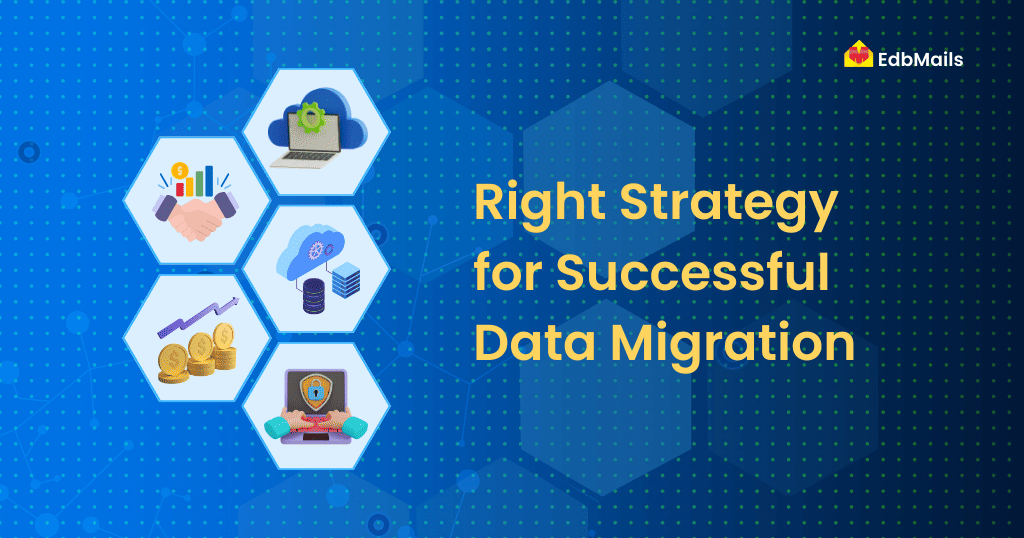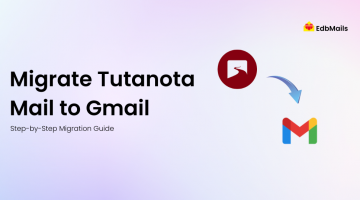Selecting the right migration strategy is critical to ensure a smooth and successful data transfer. Different organizations have different needs, depending on the volume of data, system complexity, and business continuity requirements. Choosing an appropriate approach—whether it’s a big bang migration, phased migration, or hybrid approach—helps minimize downtime, reduce risks, and maintain data integrity. A well-planned strategy ensures that emails, files, and other critical information move securely and efficiently, keeping your teams productive throughout the migration process.

Common Reasons Why Organizations Migrate Their Data
Organizations migrate data for a variety of strategic and operational reasons. Some of the most common include:
- System Upgrades and Modernization: Moving from outdated legacy systems or on-premises servers to modern cloud platforms like Office 365 to take advantage of enhanced features, scalability, and reliability.
- Data Consolidation: Centralizing multiple mailboxes, applications, or storage locations into a single environment for streamlined management, easier access, and better monitoring.
- Enhanced Collaboration and Productivity: Providing teams with seamless access to emails, calendars, contacts, and files across departments and locations, improving workflow and communication.
- Cost Optimization: Reducing expenses associated with hardware maintenance, software licenses, and IT overhead by transitioning to cloud-based solutions.
- Security, Compliance, and Business Continuity: Ensuring better data protection, disaster recovery, regulatory compliance, and minimizing risks of data loss or downtime.
- Mergers, Acquisitions, or Organizational Restructuring: Integrating multiple systems or departments into a unified platform for consistent management and communication.
Understanding these reasons helps organizations select the right migration strategy and tools, ensuring a secure, efficient, and disruption-free transition.
Essential Steps for a Smooth and Successful Office 365 Data Migration
A well-planned data migration strategy ensures a smooth, secure, and efficient transition of your organizational data. The key steps typically include:
- Assessment and Planning: Analyze the source and target systems, understand data types, volume, and dependencies, and define clear objectives and timelines.
- Choosing the Right Migration Approach: Decide between a big bang, phased, or hybrid migration based on business needs, data size, and risk tolerance.
- Data Mapping and Preparation: Identify which data will be migrated, map source to target structures, and prepare the data by cleaning and validating it.
- Testing and Pilot Migration: Perform a test migration on a small dataset to identify potential issues and validate migration workflows.
- Execution of Full Migration: Migrate the remaining data securely while monitoring progress, ensuring minimal downtime and disruption.
- Verification and Validation: Check that all data has been accurately migrated, verify integrity, and ensure accessibility for users.
- Post-Migration Support: Provide support for users, troubleshoot issues, and optimize the target environment for ongoing operations.
Following these steps ensures a structured approach, reduces risks, and maximizes business continuity during the migration process.
Best Practices for Data Migration
Following best practices during data migration ensures a smooth, secure, and efficient process while minimizing risks. Here are key points to consider:
1. Backup Your Data Before Migration
Always create a complete backup of your data before starting the migration. In case of any issues or failures during the process, having a backup ensures that no critical data is lost and provides peace of mind.
2. Follow a Clear Migration Strategy
Stick to the migration plan you’ve prepared. A well-defined strategy with contingency plans helps manage intermediate challenges and ensures the process stays on track without unexpected disruptions.
3. Test the Process Thoroughly
Continuously test the migration process at each stage. For example, verify backup integrity before migration, or test a small batch of mailboxes before performing a full migration. Repeated testing helps identify and resolve potential issues early, avoiding costly problems later.
4. Choose the Right Migration Tool
The migration software you select plays a critical role in the efficiency and success of the process. Choose a reliable tool that aligns with your organization’s requirements, supports secure data transfer, and reduces downtime. The right tool ensures a faster, seamless, and error-free migration.
By following these best practices, organizations can ensure data integrity, minimize downtime, and achieve a successful migration with minimal disruption to business operations.
Streamline Your Data Migration Effortlessly with EdbMails
EdbMails Migration Tool is a globally trusted migration and backup solution that makes transferring data simple, secure, and efficient. It supports a wide range of platforms, including Offline Exchange, Live Exchange, Office 365, SharePoint, OneDrive, Microsoft Teams, Office 365 Groups, Global Address Lists (GALs), Exchange OST, Outlook PST, IMAP email, and more.
The software ensures 100% data safety and integrity, with zero risk of data loss during migration. You can try the free trial version to explore its features, understand the workflow, and test the migration process before performing the full transfer.
Key Benefits of Using EdbMails:
- Seamlessly migrate emails, calendars, contacts, and files across platforms.
- Supports incremental migration to prevent duplicates.
- Maintains the original folder hierarchy on the target server.
- Ensures zero downtime, allowing users to continue working during migration.
- Provides a simple, user-friendly interface suitable for IT teams of all sizes.
For a detailed overview of the features supported by EdbMails, check out the EdbMails Features Page
Conclusion
A successful Office 365 migration starts with a well-planned strategy and adherence to best practices. By assessing your data, choosing the right migration approach, testing thoroughly, and using a reliable tool, organizations can ensure secure, efficient, and seamless data transfer with minimal downtime. EdbMails simplifies this process by providing a robust, user-friendly solution that preserves data integrity, supports incremental migration, and maintains folder hierarchy across platforms. Leveraging EdbMails helps businesses streamline migration, reduce risks, and keep teams productive throughout the transition.
Read our other articles
Quick solution to migrate emails from Zimbra to IceWarp
What are the Pre-Migration requirements in EdbMails?
Different Approaches to Migrate Multiple Mailboxes to Office 365



